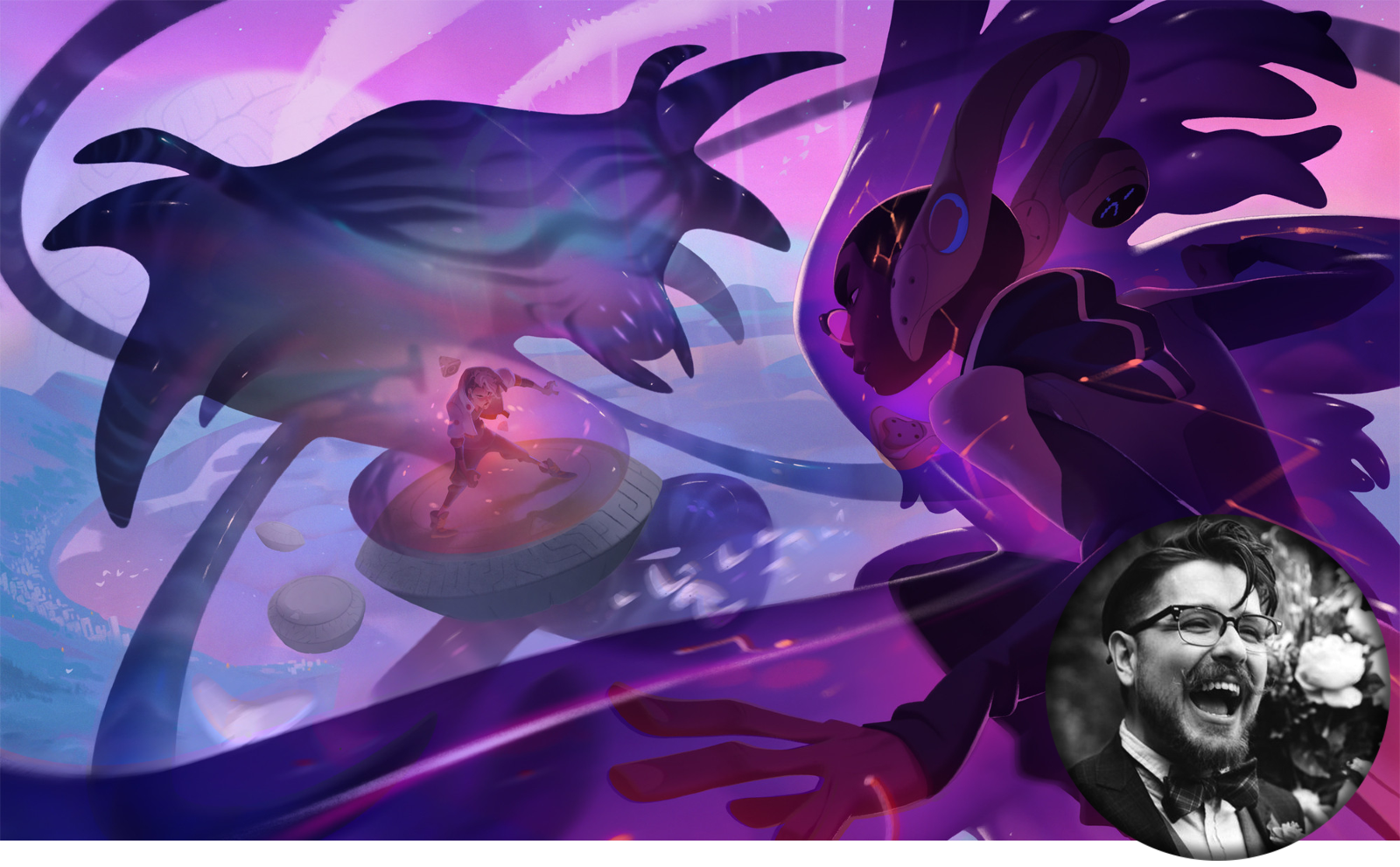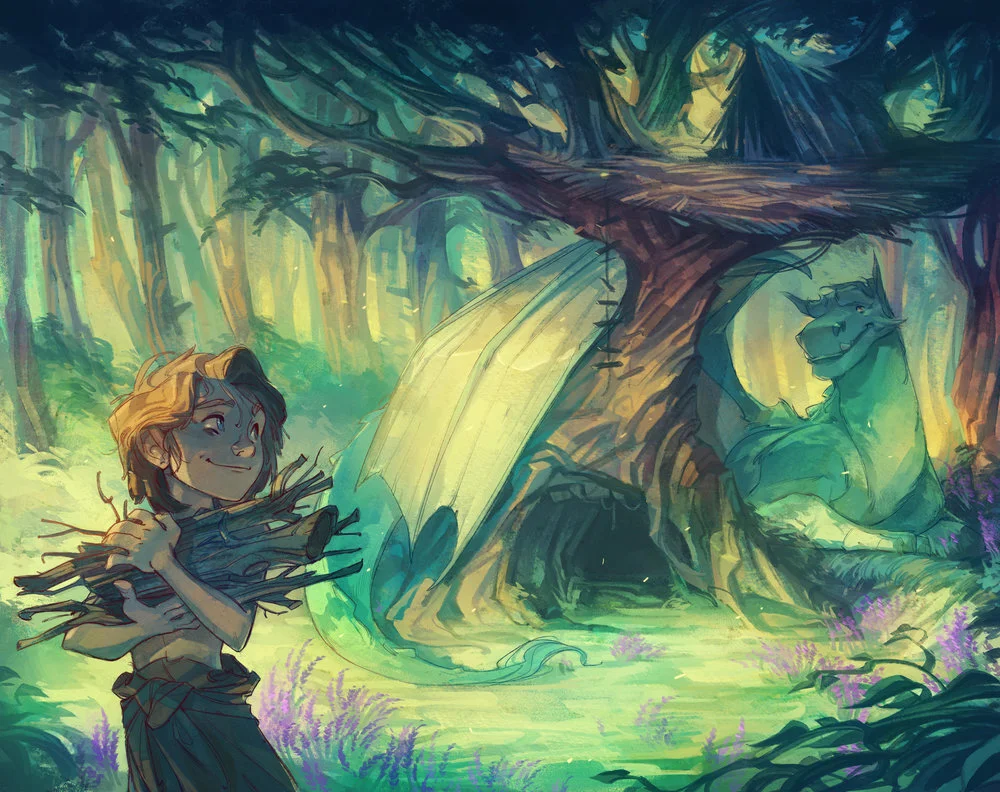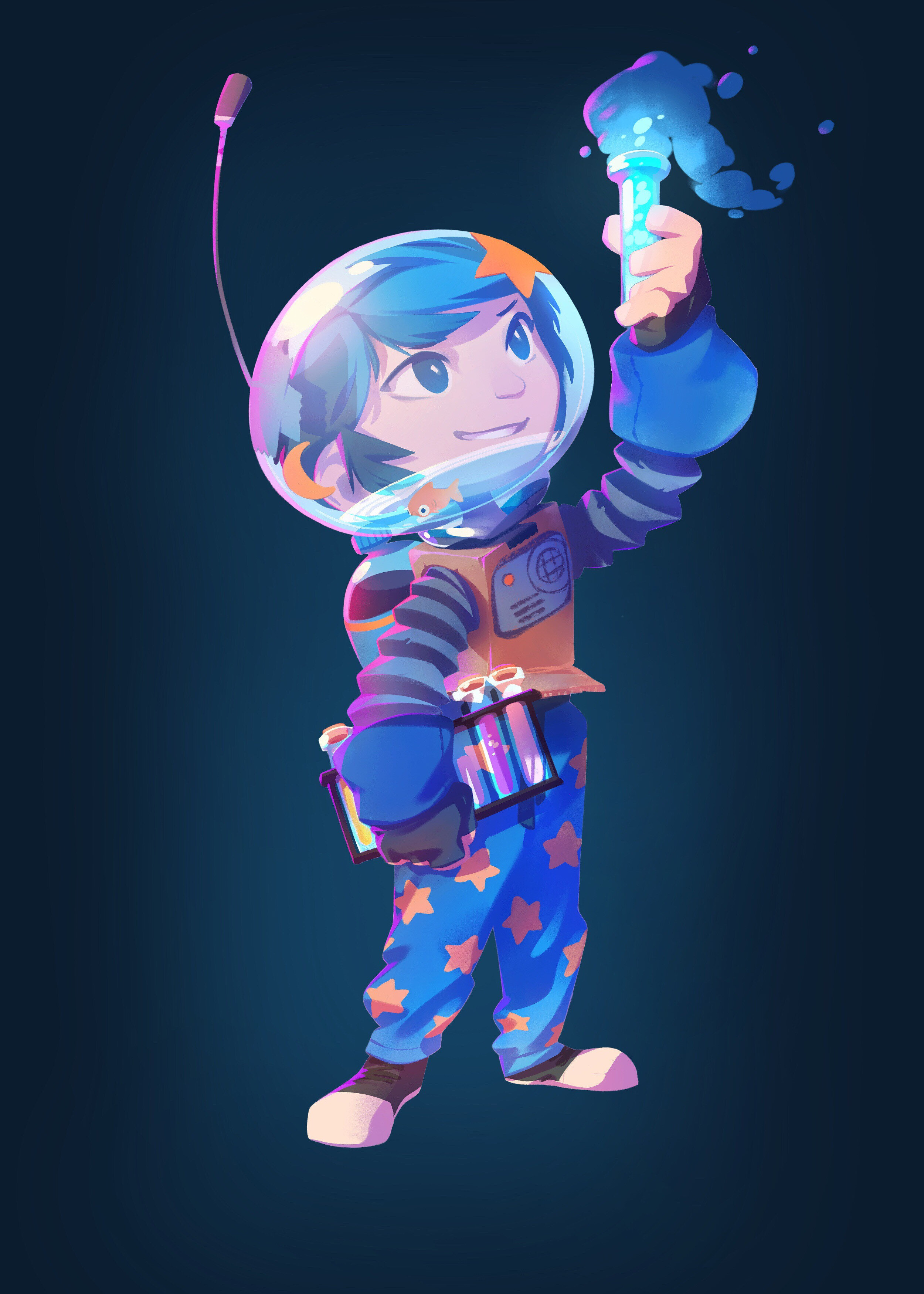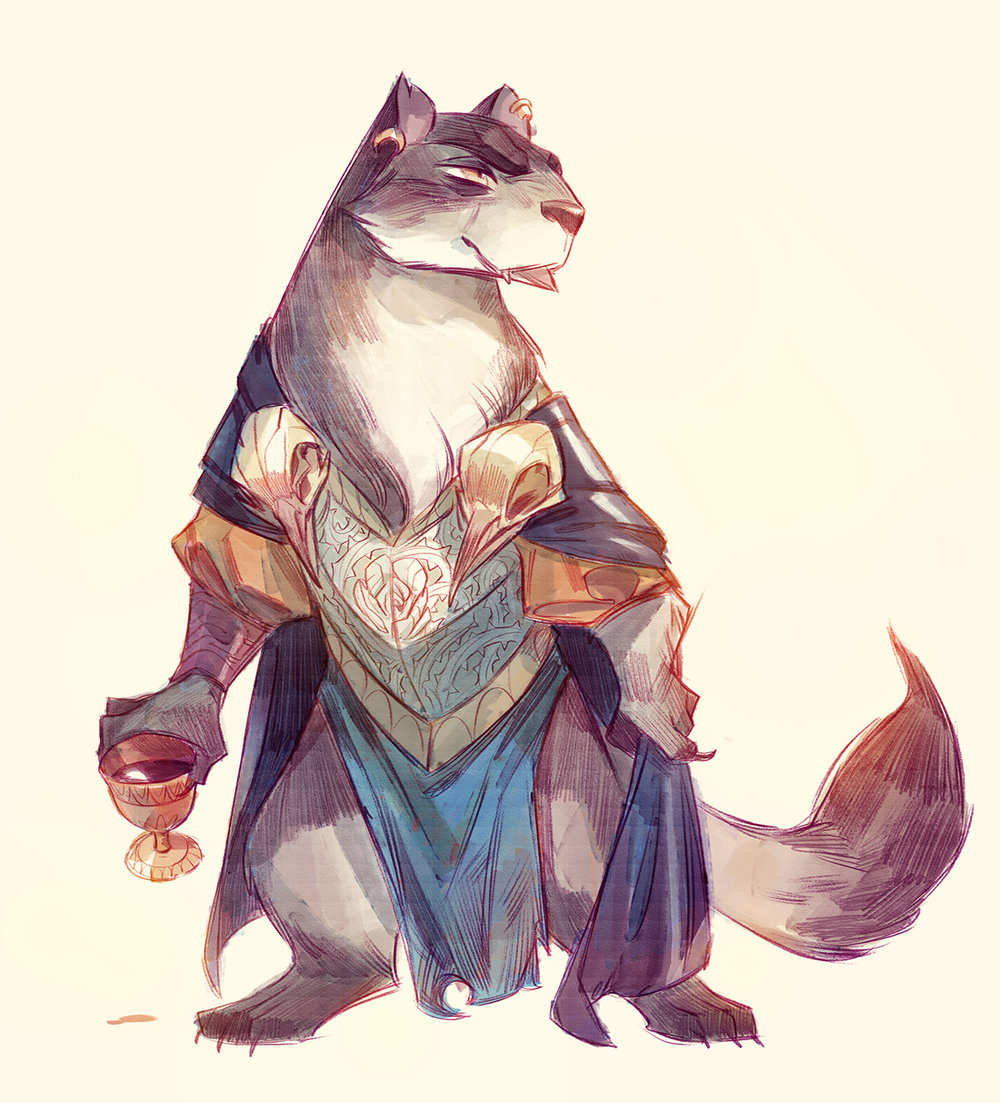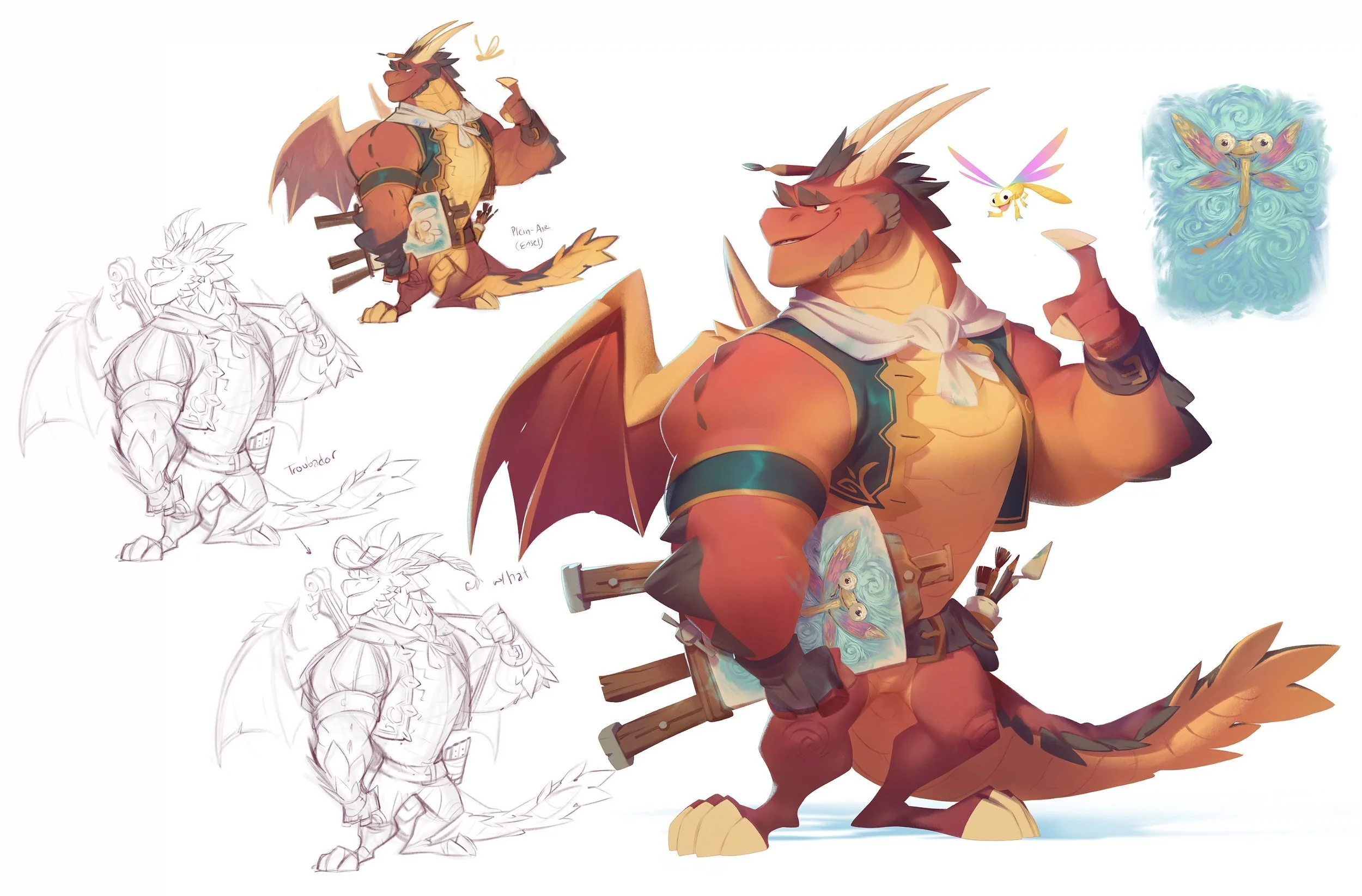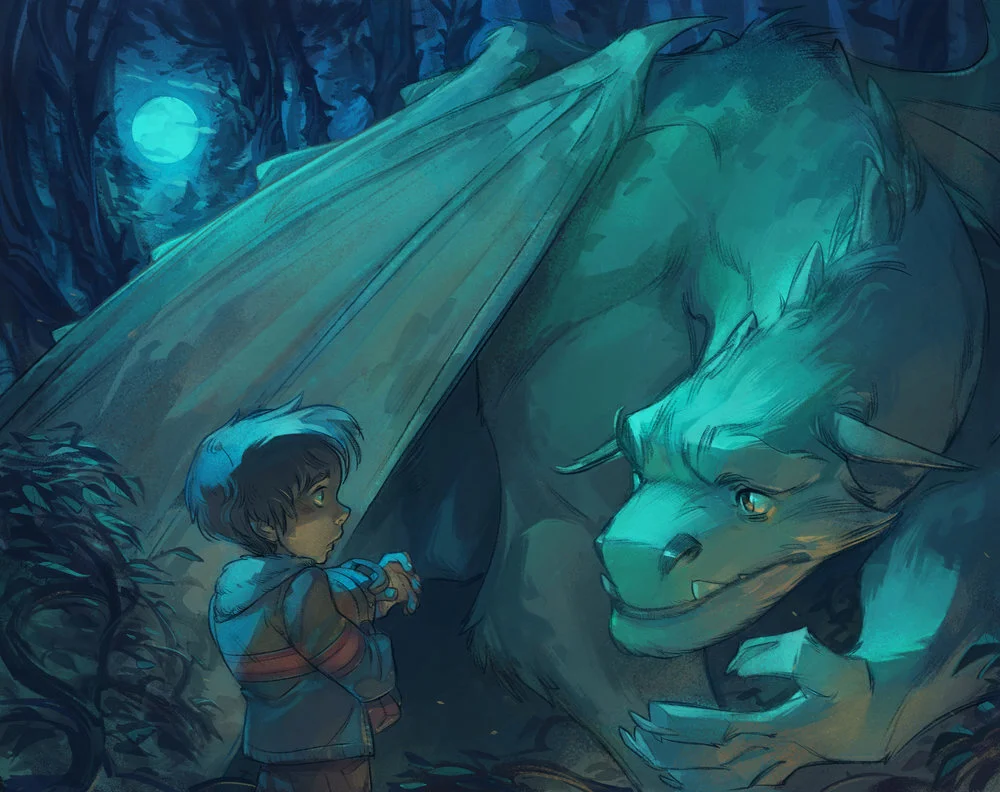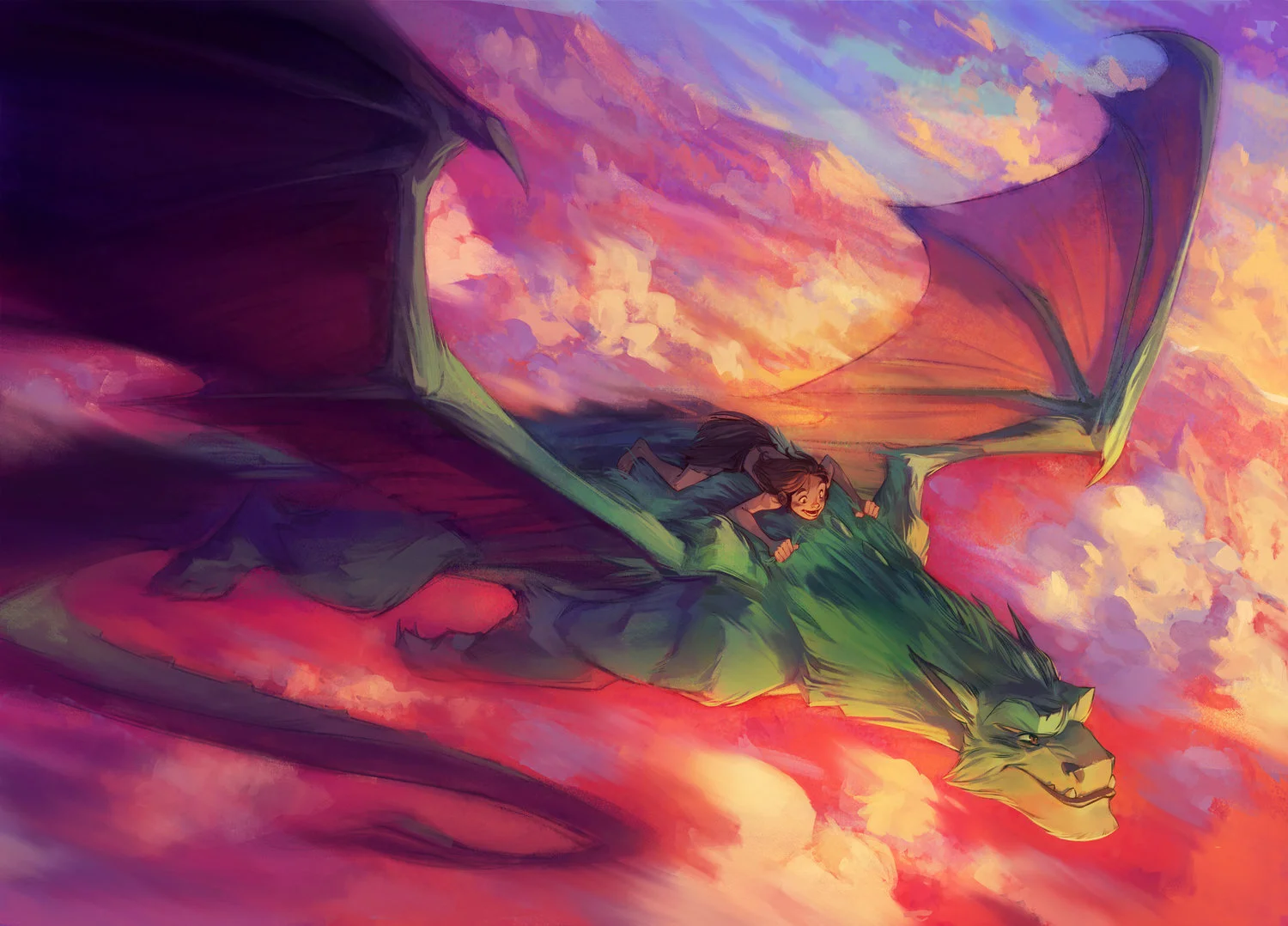Nicholas Kole
/Where did you grow up? At what age did you start thinking about pursuing an artistic career?
I was born in the United States of America, but as a kid I grew up traveling in Europe with my family. France, Holland and Austria, though eventually I came back to the USA for Art School. I can’t remember a moment when I really wasn’t thinking about becoming an artist. My mother is an illustrator herself, so I was encouraged from a young age when I showed signs that I wanted to draw. I think all kids draw, but some stop. I just never did.
Did you go to an art school or are you self taught? How did you develop your skills?
I did eventually go to art school, but that encouragement from my Mom when I was a young age was a big help. The supplies were always around the house for me to cover myself in. Eventually I went to the Rhode Island School of Design and got a degree in Illustration in 2009. That period of my development was really guided by some professors and mentors who were really important to me.
Have you always been supported in your artistic path or has it been challenging to let your family and friends understand your choice?
I honestly didn’t come up against much resistance to my drawing as a young person. The people closest to me have always been very supportive of my work, perhaps occasionally confused. There have been moments, especially since going freelance, when it was clear others had doubts. Sometimes that still comes up, it can be a strange lifestyle to more traditionally-minded folks. I definitely have doubted my chosen path, there are so many enormous things that happen in the world, and so many important jobs.
It seems silly to me that anyone would think the only thing one should do, if they can draw, is being an artist. I’ve often considered whether it would be more noble or vital to spend my time pursuing another career. But I think I would be a terrible doctor… I tend to fall over at the sight of blood!
What was the strongest influence you had when you were growing up ( artists, movies, cartoons, comics etc.. ) ?
I was definitely a big Disney kid, although as a little boy I had a phase where I turned away from some of that and I became a comic book kid, I wanted to be “edgy”. But that stage was huge for me! Spider-Man became my favorite superhero, and still is. Though I don’t read comics as much anymore, they remain a huge love of mine, and I’m really grateful to have been also exposed to European and Japanese comics from a relatively early age.
My first exposure to Miyazaki’s work Kiki’s Delivery Service was a real challenge to my tween-self, and something that I didn’t return to inspect until many years later. Then there were the Pixar movies, which were always a huge deal for me, but ultimately The Lord of The Rings trilogy was the major turning point. Those special features made me realise you could actually “have that job”, be part of an amazing team, designing those characters and swimming in that world. I was hooked. It woke up something Tookish inside of me.
Did you have a favourite subject to draw when you were a child and do you still have one today? If you do, what makes it so special?
Well, these days when I sit down to a sketchbook I tend to just draw knobby old men. Eyebrows first, the wrinklier the better. There’s something relaxing about letting go of the idea that things need to be pretty and symmetrical. But as a kid I didn’t do that, any time I was handed a coloring book I would draw scary monster faces in every one of the train wheels (the wheels, and anywhere else that looked like it could be a face if I tried hard enough). And my parents didn’t let me see things with scary monsters as a child, so I think I was sort of starved for it,. Gremlins, aliens and anything like that had this thrill for me.
From the initial client idea to the final work: What goes through your mind and what is the method you use when starting a project? Could you describe it?
The most important part of the process is at the beginning, and it’s about listening. Understanding the problem, understanding the client, trying to get into their heads, and trying to get your own head around the issues that you can solve for them with design. Trying to care in the way you hope the readers/watchers/fans will care when it’s all finished. If you can catch a twinkle of that up front, then the game of design is about keeping that alive. A lot of design work is about that. There's the things they know how to ask for, and then there's the tricky things they don’t know how to ask for, but are looking for from you. So the more information I can get from the client, the more research I can do up front. The more I know about seemingly unimportant or extraneous details about the world, the characters, the relevant metaphors, the easier it is to solve those problems.
Sometimes I’ll even request music from the project (if they have any) to get myself in the mood to enter the world that way. From there I start with loose sketches, stay really broad and loose as long as I can. I put down the first impression and then I bring in new ideas from my research, integrating different influences that come from totally different places, trying to bring those in seamlessly to see if they trigger something exciting. I love figuring out how it all relates. There’s a clicking moment in the best designs when you’ve managed to solve more than one problem at once, and I love those moments! It’s not about the rendering, though I do love that phase at the end. But that moment when you can feel the design round the corner into “Yes, this is her… or, there he is! This is our world”
What is your process in creating your art and what are your favourite tools?
These days I work on an iPad Pro with an app called Procreate, which I’ve really been enjoying. Before that, I’ve been a Photoshop kid from back in the day. I started on a Bamboo tablet and some prehistoric version of Photoshop. Before that I was scratching things out with a mouse. I used to work things out with really crisp line art, but these days with character design and concept art I find that you have to change the design a lot along the way.
Crisp line art can work against that, lock you in to a sort of coloring book mentality. So I work with bigger shapes, more loosely, a little more painterly. That way I can adjust more easily as I go when the client wants something changed. I always work from broad/vague to specific. At the end that tends to match the conversation with the art director.
What part of the creation process is the most fun and easy and what part is the hardest?
Ah, fun and easy are very different things! The most fun part is not the easiest. For me the most fun is the dreaming stage, that early part before you get checked by the client and they tell you what’s realistic, and what's not. The part where you’re really living in the “what if”, and pushing it as far as you know how to push it. But that’s not easy, to the last part of the question, that’s also the hardest stage. You’re fighting a mental battle with yourself, trying to come up with new ideas and stretch your understanding and imagination. The easiest part, everyone’s always impressed by fancy rendering, but for that I can turn my brain off, turn on Netflix, and crank it out. It’s fun, but more of a relaxing sort of fun. You’ve come up with the recipe and now you’re just letting ingredients simmer together.
What is a typical day for you, and who are the people you work, collaborate or share your creative time with?
Well, I’m a freelancer and I tend to work alone. Some days I’ll go out to coffee shops where the people are. The iPad lets me get out there and change the scenery, it’s always great to get out of my living space and get some mental distance. I usually start with email, logistics, making lists about the day. I must get my coffee (I make it or I buy it), that’s an important ritual of the day! I stay in touch with friends and other freelancers online, I’ll chat with them and bounce ideas off them while I’m working, and that helps to feel like we’re part of a loose community. Some great work starts that way.
What are some of the things you have learned from other artists who you have worked with or whose work you have seen?
I’ve learned a lot from my friend John Loren. He’s very diligent and consistent in his work, whether he’s feeling inspired or not, he shows up, and that’s been very inspiring to watch. A lot of the best artists I’ve worked with have that quality, they don’t wait for inspiration to strike, they strike first and often and keep powering through. I also always check the works of others online. I love seeing the different styles and designs, it’s a good reminder that there isn’t one right way to solve any of these problems, and it helps me to get out of my own patterns of thinking.
Some designers ideas come from strange, strong, unexpected places, and it can be great to draw inspiration from the work others are doing, pull some of that into your own work and see how it sits and whether it solves a design problem when you mix it in with the other ingredients.
Is there something that you have designed that you are most proud of?
Right now I’m really excited about the work we’re doing on the Wingfeather Saga. The look and feel of that, the other artists working together on that team. I’m really proud of the show that’s taking shape there. In general, I think the feeling of pride in design only tends to last for a little while, before you get restless and feel like you can move on. But with a team of talented friends it’s easier to stay excited by the unexpected, rad work they’re contributing to the project.
When I think back there are a few highlights that stay fun, I’m still pleased with the work I did together with the team on Play-Doh. I got to do a lot of thinking and conceptual work with them. I’m always grateful to work more as a contributing creative mind and not just a wrist. Some of the thinking we did and the ideas we pushed forward were really neat to explore. Along with Jellybots, my Flight comic from way back, some of my personal designs along the way. I’m glad I don’t dislike everything I’ve done, but I’m sure I can push much further.
What projects have you worked on in the past and what are you working on at the moment (if you can tell us)?
I started at 38 Studios, worked with some folks at MIT on a few indie game projects, then moved on to freelance since 2012. In that context I’ve worked with Disney on a couple books (Maleficent and Pete’s Dragon), I’ve worked with Hasbro on Play-Doh, with Mattel, Dawngate and it’s webcomic for EA, on League of Legends for Riots, contributed to the Masters of Anatomy Character Masterclass book (on Robin Hood). The most current work is never stuff I’m allowed to talk much about, except for my role as Production Designer on the Wingfeather Saga. I do have some upcoming work for the game Hob, some stuff for Lucky’s Tale, but more than that is all very hush-hush!
Do you have a longterm career goal? What would your dream project be?
Hmm… the idea of having a single dream project sort of scares me. Things change so much, and I’d prefer not to hang my coat on something so specific. There’s a line in Serenity that I misquote a lot, it’s something like “I’d rather have a way than a plan”. I have a goal to be working more directly with story and world development and design in the big picture sense. It would be awesome to work on a feature animated film, or a full-on show. I never want to move away from drawing and designing, I’d love to solve more story problems than gameplay ones, and I’d love to work with some of my most talented friends more and more as I go, like a big arty snowball. I think all of that is more of a “goal” than any single project.
Working for a company or freelancing: what suits you best? And why?
I am pretty sold on this whole freelance thing. I love the autonomy. There’s an idea of stability you sacrifice, guaranteed health insurance etc, but I’m pretty convinced (with companies and projects going up and down all the time) that it’s an illusion. Freelance gives me more mobility to ride those waves out! I like moving from project to project, the variety is very engaging, and I’ve always felt most useful at the outset of things. For now, as a younger man without a family to provide for, freelance is a good way to go, in my opinion. Also you can keep weird hours and travel! What’s not to like about it?
What advise would you give to an artist who is dealing with an artist's block? How do you boost your imagination and keep yourself creative?
Artist block is tricky. I find it happens to all of us relatively often. Not just once, but a thousand times in a given year, month, day, and it can go as mysteriously as it arrives. I always think about coping with it as a mix between two things. Just show up, draw, draw badly, draw from life, draw things you’d be embarrassed to show anyone. One drawing is always better than no drawings, and it is always better for inspiration to find you again, it will when you have a pencil in hand. Give yourself permission to suck for a while, but don’t give up entirely. If you need to (and I often need to) change your medium. Try paint or chalk or something that will shake up the usual routine that has you stuck. Sculpt or knit! Those can knock things loose and you can fall in love with design again when you feel totally bored by a certain way of doing it.
The other thing to balance is what I refer to as the “Kiki method”. Take long walks, go eat good food and have long conversations with friends. There’s more to life than art, and so many of us in this industry are so fixated on making art that we forget to tell each other that we have worth outside of our work. Get in touch with what it is you love about being a human being, it fills up an important sort of tank that will support the work you eventually make again, and you WILL make it again! But you can’t draw if there’s nothing to draw from, take care of yourself!
Concept art, animation, illustration, comics, you name it. There are so many careers and when you are very young, sometimes you know only one thing: you simply love to draw. In your opinion, what should a young person take into consideration to make the right decision when choosing an artistic path?
Well, so far I’ve been surviving by not having to choose a single artistic path. I favor character design, but I’ve done illustration, comics, environment and marketing art for games and movies and toys. I don't think you have to choose just one. I think there’s probably better advice out there, but since it’s coming from me, I’d say if you love to draw, just keep drawing. Find the things and ideas that tug on you, that you love to draw, because those will span any media.
Try everything at least once, different techniques and styles, but know that there are things that will change with genre and method, but there are things that won’t. Figure out as you go what those things are that never change color, composition, design, story. Those principles are the things you should focus on. No matter what industry you find yourself in, you’re going to use those skills. Build a skill set that is strong and versatile, and you’ll be much better at surviving the march of technology and the changing-merging industries we are all headed towards.
In your own experience, what would you suggest to someone who is inspired by your work and wants to follows your footsteps: should they work in one consistent style, or work on many different ones?
I think I have many very distinct styles and I’ve been told by others who see my work that I actually have one cohesive style across my work… but I can’t see that as easily as they do. I’d say: don’t obsess over style. Your style will happen accidentally, and you might not notice it happening. Don’t think as much about style as you do about substance. That first most exciting part of design, the dreaming and imagining, has little to do with style. Lean into that style will find you as you go. Change it up, don’t get too attached to an idea of style, a few different projects will require different corners of your stylistic skill set. If I think I’m on any path that folks might want to follow, I hope that’s increasingly away from style and towards substance.
If you had to recommend only one art book (a comic book, graphic novel, children book, ''how to'' book) to a fellow artist, what would it be and why?
I love the Prince of Egypt art book. It’s one of my favorite animated films, and the book they made has a great overview of the process with a lot of insights into their thinking.
What’s your point of view about the industry today: what are the expectation for someone who wants to make a living with an artistic career?
I think there is a trend increasingly towards hiring people with diverse skill sets. I think making a living tends to depend on being able to adjust to new situations and challenges. Everyone’s footprint will be different, but I know I am always keeping my eye out for sculptors who can design and designers who can work across multiple styles. I see a lot of more engaging and creative work happening in TV than in film right now, bigger chances and many really exciting opportunities to break new ground. I think we’ll turn a technological corner some time soon, probably with some form of VR, and that will open up a whole new avenue for creative thinking, story and world development. I’m excited to see things adapt and I think in order to survive in that landscape, folks who want to make a living will need to be able to adapt.
Who are the artists who inspire you the most today and what are some of your favourite designs out there?
Hayao Miyazaki has to be first name on any list for me. Of his designs, I think that No-Face is incredible. But I also think that Catbus is great and Totoro is just fantastic. There aren’t many things that I see in Ghibli films that don’t amaze me. I’ve just gotten into a French comic called Chateau Des Etoiles. I love Alex Alice’s work across that. I also love Man Arenas’ work, I think his designs are heartrendingly beautiful. I like the work of Fabien Mense, his designs are so playful and imaginative, and I often turn back to folks like Mike Mignola. The work of Alexandre Diboine and Ovopack are also among some of my big personal favorites recently online.
We have a soft spot for hand drawn animation, what is your opinion about the future of this art form?
My opinion is that I sincerely hope it has a future! I love it as well, and I’d love to see a return to that in the West. I’d love to contribute to that in any way, I’m a big admirer of the work that’s coming out of Gobelins. I think if it has a future, it will be smaller one, but I can't imagine it will ever disappear outright. I’m glad that things like paper books and records have endured, I think it will continue in that fashion, mostly a bastion for the faithful and the specialists. An art form for artists. But I also think story is king, and regardless of the look the mainstream would welcome a big hit in 2D if it really sang the way that many of the big Pixar hits of the last few decades have. For example, I don’t think anybody saw as much potential as there was in stop-motion before Nightmare Before Christmas happened.
Social networks, crowd funding websites, print on demand online services and so on. New media on the Internet are connecting the artists directly with their fans like never before. In your opinion, how is this affecting the industry and what are the pros and cons?
I think it can’t help but affect the industry: it’s the march of progress, and it can’t be avoided. I love it, but in some ways I miss the role that skilled publishers and studios can play in lifting up works to a larger audience, I think we may drift back towards a model like that one, since so many projects can be lost in the crowd. It’s hard to distinguish yourself in all the noise!
I love the freedom this gives us all to try to make new things, but I don’t think it has changed the fundamental questions about what constitutes good work. I am deeply grateful for the Internet for allowing me to build a career, and for the many wonderful works it’s delivered into my lap. I think that direct connection between artist and audience is a wonderful thing, but I do see a role for thoughtful curation and selection.
When clients contact you for a commission, what essential info should they include in their very first email in order to communicate with you efficiently and effectively?
Well, their name is always a good start. I think as long as the email is polite, articulate, spelled correctly, we’re off to a good start. You’d be surprised how many are not! I love to get as much information about their project and needs as soon as I can, I know most things are NDA’d these days, so even some general comparisons to other known projects can help me get an idea of what they’re looking for. There’s no game here, just an exchange of information and a decision whether or not to work together. I love getting emails from prospective clients and I always want to find ways to say yes to new work. And of course, the all important information about compensation, the easier. More up front and drama free that conversation is, the better!
Finally, where can we see your art online and get in touch with you? How can we buy your creations and support your work?
Well, my email address is ( nkole@alumni.risd.edu ). You can see galleries of my work over on Behance ( behance.net/nicholaskole ) and ArtStation ( artstation.com/artist/happyrock ). I’m most active on my Instagram ( instagram.com/nicholaskole ) and Twitter ( twitter.com/fromhappyrock ) these days. And for good measure, my older blog where I do a lot of writing is here ( nicholaskole.blogspot.com ).
Thank you Nicholas :)


